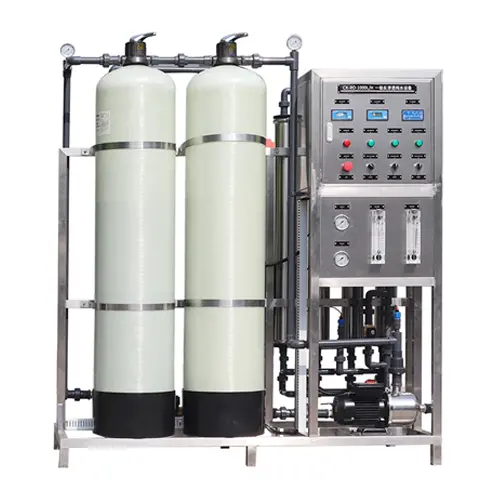Reverse Osmosis Plant
All Products
Want More Information ?
More Wastewater Solution ?
A reverse osmosis plant is the world’s most advanced and practical desalination equipment. It is mainly composed of a reverse osmosis membrane, a high-pressure pump, and a security filter set up to protect the reverse osmosis membrane. The reverse osmosis plant uses the selective permeation principle of the reverse osmosis membrane to apply a certain pressure to the raw water flowing through the reverse osmosis membrane through a high-pressure pump so that the water molecules in the raw water can permeate through the membrane. At the same time, other inorganic salts, colloids, bacteria, viruses, and organic matter are retained, thus obtaining pure deionized water.
The reverse osmosis unit can operate under ultra-low-pressure operating conditions and optimally combines water permeability with desalination, thus achieving energy savings and reducing equipment investment and operating costs. Therefore, it is the best for high-purity water preparation, brackish water desalination, and wastewater treatment. It has been widely used in many fields, such as electronics, medicine, the chemical industry, food, electric power, seawater desalination, etc. As a result, customers well receive its technical performance and product quality.


1. No Change of Water Chemistry, No Side Effects
Under the condition of no phase change at room temperature, the reverse osmosis system can separate solute and water, which is suitable for the separation and concentration of heat-sensitive substances and has lower energy consumption compared with the separation method with phase change.
2. High Desalination Rate and Wide Range of Impurity Removal
One of the main characteristics of a reverse osmosis device is its high desalination rate, up to 96%~99%, which can retain solutes with a particle size of several nanometers or more and extract fresh water well from water with high salinity. At the same time, it can also remove bacteria, toxins, and other organic matter from water. Therefore, compared with the traditional reverse osmosis technology, feed water adaptability, desalination rate, and service life greatly improved.
3. Standardized Process Design and High Degree of Automation
It follows the economic, reasonable, and standardized design concept and considers customers from both cost-effective and technical perspectives. EcoLan reverse osmosis plant adopts a fully automatic control mode, fully automatic operation, safe and hygienic on-site, and reduces the impact of human misoperation on the equipment.
4. Stable Water Quality and Significant Economic Benefits
EcoLan reverse osmosis plant adopts high quality and high efficiency reverse osmosis membranes in selecting reverse osmosis membranes with high water permeability, stable effluent quality, and a service life of more than three years. In addition, the reverse osmosis unit uses low pressure as the membrane separation power, with low energy consumption, simple operation, and low operating cost.
5. Flexible System Application, Easy Operation and Maintenance
We can flexibly adopt different system design forms based on additional application requirements. For example, the parallel connection can increase the water production rate, the series connection can improve the desalination rate, and circulation or partial circulation can shorten the process flow. Furthermore, a stable operation can be ensured by controlling several main parameters such as voltage, current, concentration, flow, pressure, and temperature.



